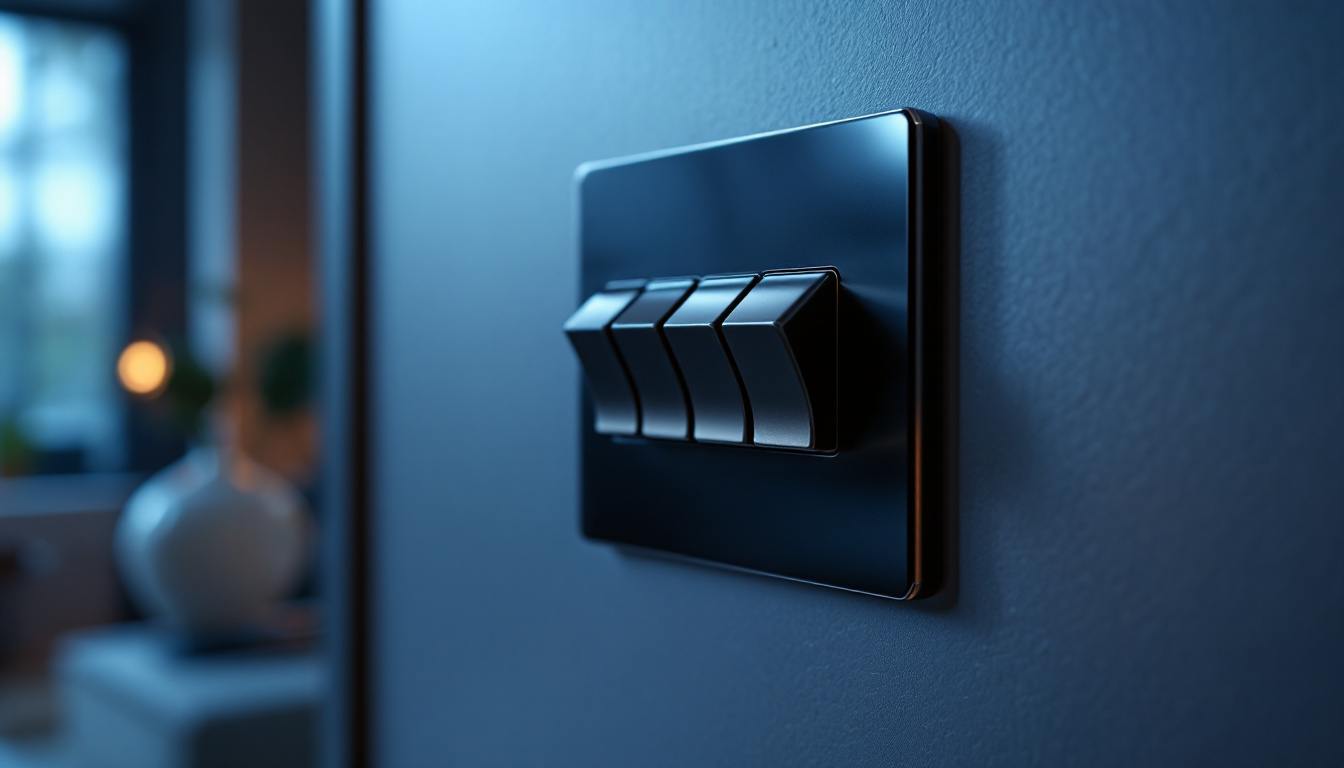
In the realm of industrial lighting, the light switch may seem like a simple component, but it plays a crucial role in the overall efficiency and functionality of lighting systems. For lighting contractors, understanding the nuances of industrial light switches can lead to improved installations, enhanced safety, and greater client satisfaction. This article provides quick tips to help lighting contractors navigate the complexities of industrial light switches, ensuring optimal performance and reliability.
Industrial light switches differ significantly from residential switches in terms of design, functionality, and application. They are built to withstand harsher environments and are often used in settings where durability and reliability are paramount. The robust construction of these switches ensures they can endure extreme temperatures, vibrations, and exposure to various chemicals, making them indispensable in industrial settings.
There are several types of industrial light switches, each designed for specific applications. The most common types include toggle switches, rocker switches, and push-button switches. Toggle switches are often used in environments where a simple on/off operation is required, while rocker switches provide a more modern aesthetic and can handle higher current loads. Push-button switches are typically employed in applications where quick activation is necessary. Additionally, there are specialized switches such as rotary switches, which allow for multiple settings, and emergency stop switches, designed for immediate shutdown in critical situations, ensuring safety in high-risk environments.
When selecting an industrial light switch, several key features should be taken into account. These include the switch’s amperage rating, voltage rating, and environmental resistance. Amperage ratings indicate the maximum current the switch can handle, while voltage ratings ensure compatibility with the electrical system. Additionally, environmental resistance features, such as waterproof or dustproof ratings, are essential for switches used in challenging conditions. It is also crucial to consider the switch’s lifespan and maintenance requirements, as some industrial applications may necessitate switches that can operate reliably over extended periods without frequent replacements.
Different industrial applications may require specific types of switches. For example, in manufacturing facilities, switches may need to be robust enough to handle frequent use, while in chemical processing plants, switches must be resistant to corrosive substances. Understanding the specific requirements of each application is vital for selecting the right switch. Furthermore, in environments such as oil rigs or mining operations, switches must not only resist harsh chemicals but also be explosion-proof to prevent ignition in volatile atmospheres. This highlights the importance of thorough risk assessments and compliance with industry standards when choosing the appropriate switch for a given application.
Proper installation of industrial light switches is crucial for ensuring safety and functionality. Following best practices can help prevent issues down the line and ensure compliance with industry standards.
Before installation, it is essential to conduct thorough pre-installation checks. This includes verifying that the power supply is turned off and that all necessary tools and materials are on hand. Additionally, contractors should inspect the switch and its components for any signs of damage or wear. Ensuring that the installation site is clean and free of obstructions will facilitate a smoother installation process. It may also be beneficial to review the specific installation guidelines provided by the manufacturer, as different models may have unique requirements. Furthermore, assessing the environmental conditions, such as humidity and temperature, can help determine if any special considerations are needed for the installation.
Proper wiring techniques are critical for the safe operation of industrial light switches. Contractors should use appropriate wire gauges based on the switch’s amperage rating and ensure that all connections are secure. Utilizing wire nuts or terminal blocks can help maintain a tidy and organized wiring setup. It is also advisable to follow the manufacturer’s wiring diagrams to avoid any potential issues. In addition, employing color-coded wires can enhance clarity and reduce the risk of errors during installation. When working in environments with high electromagnetic interference, using shielded cables can also help protect the integrity of the electrical signals and enhance the overall performance of the lighting system.
Once the installation is complete, thorough testing is essential. Contractors should verify that the switch operates correctly by turning it on and off multiple times. Additionally, checking for any unusual sounds or heat during operation can help identify potential problems. Finally, it is advisable to ensure that all safety features are functioning as intended, providing peace of mind for both the contractor and the client. Beyond basic functionality, it is also wise to conduct load testing to ensure that the switch can handle the expected electrical load without tripping or overheating. Documenting the testing process and results can serve as a valuable reference for future maintenance and inspections, reinforcing the importance of a thorough and systematic approach to installation and testing in industrial settings.
Regular maintenance of industrial light switches can significantly extend their lifespan and ensure consistent performance. Implementing a proactive maintenance schedule can help identify and address issues before they escalate.
Conducting routine inspections is a vital aspect of maintenance. Contractors should periodically check switches for signs of wear, corrosion, or damage. Inspecting the surrounding area for dust or debris buildup is also important, as this can affect the switch’s operation. Keeping detailed records of inspections can help track the condition of each switch over time.
Keeping industrial light switches clean is essential for optimal performance. Contractors should use a soft, dry cloth to wipe down switches, avoiding abrasive materials that could scratch surfaces. In environments with heavy dust or grime, a mild cleaning solution may be necessary, but care should be taken to avoid getting moisture inside the switch. Regular cleaning can prevent buildup that may interfere with the switch’s functionality.
When a switch shows signs of failure or damage, it is crucial to replace it promptly. Contractors should have a clear protocol in place for identifying when a switch needs replacement, including guidelines for selecting a suitable replacement. Keeping a stock of commonly used switches can facilitate quick replacements, minimizing downtime for clients.
Safety is paramount in any industrial setting, and light switches are no exception. Understanding and implementing safety measures can protect both contractors and clients from potential hazards.
Familiarity with electrical safety standards is essential for lighting contractors. Adhering to regulations set forth by organizations such as the National Electrical Code (NEC) ensures that installations are safe and compliant. Contractors should stay updated on any changes to these standards and incorporate them into their practices.
Using appropriate personal protective equipment (PPE) is crucial when working with electrical systems. Contractors should wear insulated gloves, safety glasses, and hard hats to protect against potential hazards. Ensuring that all team members are trained in safety protocols can further enhance workplace safety.
Having clear emergency procedures in place is vital for responding to electrical incidents. Contractors should develop and communicate a plan for addressing electrical shocks, fires, or equipment failures. Regular training sessions can help ensure that all team members are familiar with emergency protocols and can act swiftly in case of an incident.
The world of industrial lighting is continually evolving, with new technologies enhancing the functionality and efficiency of light switches. Keeping abreast of these innovations can provide contractors with valuable insights for future projects.
Smart switches are becoming increasingly popular in industrial settings. These devices can be controlled remotely, allowing for greater flexibility in managing lighting systems. Features such as scheduling, dimming, and energy monitoring can lead to significant energy savings and improved operational efficiency.
As sustainability becomes a priority in many industries, energy-efficient light switches are gaining traction. These switches are designed to minimize energy consumption while maintaining optimal performance. Contractors should consider recommending energy-efficient options to clients looking to reduce their environmental impact.
Integrating light switches with building management systems (BMS) can streamline operations and enhance control over lighting systems. This integration allows for centralized management of lighting, heating, and other systems, leading to improved energy efficiency and operational effectiveness. Understanding how to implement these integrations can set contractors apart in a competitive market.
Effective communication with clients is essential for ensuring satisfaction and fostering long-term relationships. Educating clients about industrial light switches and their importance can empower them to make informed decisions.
When discussing light switches with clients, it is important to explain their functionality and significance. Providing insights into how different types of switches operate and their applications can help clients understand the value of investing in quality products. This education can also lead to more informed discussions about maintenance and replacement schedules.
Clients may have concerns regarding the safety and reliability of industrial light switches. Addressing these concerns openly can build trust and confidence. Providing information about safety standards, maintenance practices, and the benefits of using high-quality switches can alleviate worries and promote a collaborative relationship.
After installation, follow-up communication is essential for maintaining client satisfaction. Checking in to ensure that the switches are functioning properly and addressing any questions or concerns can demonstrate commitment to quality service. This ongoing communication can lead to repeat business and referrals, enhancing the contractor’s reputation in the industry.
Industrial light switches may appear to be simple components, but their importance cannot be overstated. For lighting contractors, understanding the various types, installation best practices, maintenance tips, and safety considerations is crucial for delivering high-quality service. By staying informed about innovations in technology and fostering effective communication with clients, contractors can enhance their expertise and provide exceptional value in the industrial lighting sector.
Implementing these quick tips can lead to improved installations, satisfied clients, and a successful career in the ever-evolving field of industrial lighting. Embracing the complexities of light switches will not only enhance operational efficiency but also contribute to a safer and more sustainable industrial environment.
Ready to elevate your lighting projects with the highest quality industrial light switches? Look no further than LumenWholesale, where we offer an extensive selection of spec-grade lighting products at unbeatable wholesale prices. Say goodbye to local distributor markups and hello to superior lighting solutions that meet rigorous industry standards. With LumenWholesale, bulk buying is a breeze, and with free shipping, you can rest assured that you’re getting premium lighting at the best value — without any hidden fees. Don’t compromise on quality, affordability, or convenience. Visit LumenWholesale today and experience the difference for yourself!

Discover why LED dimmer switches are becoming essential tools for lighting contractors.

Discover the essential role of the three-way toggle switch in modern lighting installations.

Discover expert insights on choosing the perfect ceiling light for your kitchen with our comprehensive guide.

Discover essential insights and expert tips on overhead light fixtures that every lighting contractor needs to master.